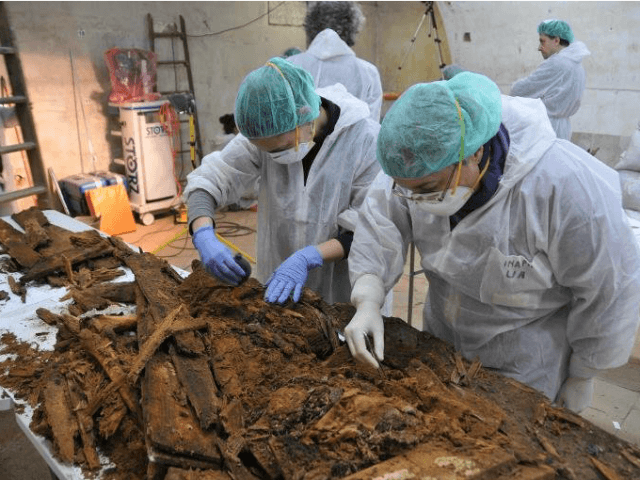An interdisciplinary team of thirty experts have discovered what they believe to be the mortal remains of Spain’s most famous writer, Miguel de Cervantes Saavedra, the author of Don Quixote and the “father of the modern novel.”
Last week, the team unearthed the remains of 300 bodies in an alcove of a Madrid convent crypt, nearly 400 years after the death of Cervantes, and offered a press briefing of their findings on Tuesday morning.
The team’s leader, anthropologist Francisco Etxebarria, said that the documentary evidence coincided with the archaeological findings, but that it was impossible to pinpoint the exact bones of the author.
“It can be considered,” said Etxebarria, that among the fragments found in a collection of bones in the ground probably dating to the 17th century “are some belonging to Cervantes” because “there are many coincidences and no discrepancies.”
“We are convinced that among those fragments we have something of Cervantes,” he said.
Documentary sources state that Cervantes was buried in the convent upon his death in April 1616, a week after William Shakespeare. Cervantes’ wife Catalina was also buried in the crypt.
Born in Alcala de Henares in 1547, Cervantes has been called the father of the modern novel for his masterpiece Don Quixote, which was published in two parts in 1605 and 1615.
The book narrates the adventures of the self-styled knight Don Quixote de la Mancha and his faithful sidekick Sancho Panza, and they travel through sixteenth-century Spain trying to restore chivalry and bring about justice. Cervantes’ work is one of the most widely read and translated books in the world and a foundational text of Western literature.
The investigations of “Project Cervantes” began last April with a ground-penetrating radar scan of the crypt and church of the Trinitarians, based on documentary work by genealogists and historians. The team also employed infrared cameras and 3D scanners to identify the burial site.
In January, the team discovered a tablet with the initials M.C. in one of the burial niches found behind a wall, which sparked speculation of a reference to Cervantes. Nonetheless, further investigation revealed that the bodies in that niche did not belong to a 69 or 70-year-old man, which was Cervantes’ age when he died.
Another niche contained a number of adult bones matching the group of people with whom Cervantes had been buried before their tombs were disturbed and moved into the crypt when the church was rebuilt, at which time the remains of Cervantes were lost. Researchers say that separating out and identifying his badly damaged bones from the other fragments will be difficult.
“The remains are in a bad state of conservation and do not allow us to do an individual identification of Miguel de Cervantes,” said forensic scientist Almudena Garcia Rubio.
“But we are sure what the historical sources say is the burial of Miguel de Cervantes and the other people buried with him is what we have found.”
Follow Thomas D. Williams on Twitter @tdwilliamsrome.

COMMENTS
Please let us know if you're having issues with commenting.